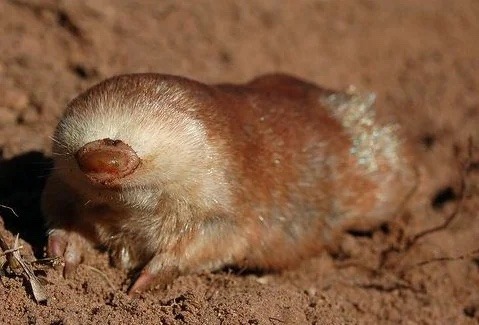#afrotheria
Text
🧬DNA sequencing has revealed that elephants belong in a superorder called Afrotheria—meet their closest relatives!
🐘Learn more at the Museum’s new exhibition The Secret World of Elephants. Discover new science about both ancient and modern elephants, see full-scale models of proboscideans, and more.
🦃Visiting the Museum this Thanksgiving? Best availability is on Monday and Tuesday of that week. Here are a few tips!
#science#amnh#museum#natural history#nature#animals#elephants#proboscideans#did you know#fact of the day#hyrax#manatee#dugong#sea cow#afrotheria#things to do in new york city#animal kingdom#stem
555 notes
·
View notes
Text

Phosphatherium escuillei was one of the very earliest known members of the proboscideans, a lineage today represented only by the three living species of elephants.
Living in what is now Morocco during the late Paleocene and early Eocene, around 56 million years ago, it would have been about the size of a cat, roughly 30cm at the shoulder (~1') and 60cm long (~2'). It had a fairly low flat head with a proportionally short snout, while the back end of its skull behind its eyes was elongated, supporting large powerful jaw muscles.
Wear patterns on its teeth suggest it ate a lot of tough vegetation, and it may have been a semiaquatic animal behaving somewhat like modern tapirs or pygmy hippos – spending a lot of the daytime lounging in water, and emerging onto land to forage during the night.
———
NixIllustration.com | Tumblr | Patreon
#science illustration#paleontology#paleoart#palaeoblr#phosphatherium#proboscidea#afrotheria#mammal#art#they are very shaped
323 notes
·
View notes
Text

Missing
160 notes
·
View notes
Text

Manatees. These are Endangered; written by Charles Cadieux and illustrated by Bob Hines. 1981.
Internet Archive
226 notes
·
View notes
Text

Western Rock Sengi (Elephantulus rupestris)
Despite its mouse-like appearance and diminutive size, this critter isn’t a rodent. In fact, it’s actually more closely related to elephants and sea cows! Typically weighing only 0.07 kg (2.5 oz), this insectivore’s diet includes ants and termites. It can be found in parts of Africa including Namibia and South Africa.
Photo: kevinatbrakputs, CC BY 4.0, iNaturalist
via: American Museum of Natural History
110 notes
·
View notes
Text

Here have a dumb joke about Afrotheria because I can’t get the convergent evolution of tenrecs and hedgehogs out of my head
#I know this is nonsense but so is taxonomy#esoteric biology jokes#phylogeny#afrotheria#biology#animals#tenrec#hedgehog#memes#photoshop#morphology#taxonomy
534 notes
·
View notes
Text

Shout out to Afrotheria, a whole clade of animals that must've mocked God for old-timey white people.
#animals#afrotheria#tubulidentata#aardvark#tenrec#hyrax#elephant#elephant shrew#dugong#manitee#Orycteropodidae#Orycteropus afer#critters#possumcollege#beasties
27 notes
·
View notes
Text
Thinking about the clade Afrotheria. So many cool little guys. Evolution really hit it out of the park with that one.
2 notes
·
View notes
Text
It's #NationalAardvarkWeek! Besides being one of my favorite mammals, it's also the most evolutionarily distinct one (more on that below). Stay tuned for more aardvark art and info all week long! 😎 #AardvarksAareAawesome

"Erdferkel," Plate 14 in Brehms thierleben, allgemeine kunde des thierreichs, 1876-9. Biodiversity Heritage Library.
#DYK the Aardvark (Orycteropus afer) is the only living representative of an entire ORDER of mammals, Tubulidentata? This helped it score as the #1 most evolutionarily distinctive (ED) mammal on ZSL's EDGE of Existence list:
[FYI the only other mammal order with a single living member is Microbiotheria, represented by the Monito del Monte (Dromiciops gliroides) - however they have more living relatives one step out in superorder Australidelphia than the Aardvark does in the Afrotheria.]
#aardvark#mammals#mammalogy#zoology#Tubulidentata#Microbiotheria#Monito del Monte#Australidelphia#Afrotheria#ZSL#EDGE of Existence#evolutionarily distinctive#illustration#book illustration#European art#German art#19th century art#lithograph#print#National Aardvark Week#Aardvarks Aare Aawesome#animals in art
3 notes
·
View notes
Note
Hey! Could you please talk about afrotheria? You're the coolest zoologist I know!
dawwwww
but yes of COURSE I can talk about afrotheria it's a very diverse group they all have a questionable relationship and have a whole lot of convergent evolution they're somewhat related to Xenarthra but we aren't entirely sure how close yet
Paenungulata and Afroinsectiphilia those are our two clades or "branches"
so Afrotheria have 6 Supergroups and 3 families
Chrysochloridae (golden moles)
Tenrecidae (tenrecs)
and Potapogalidae (otter shrews)
as always this is gonna be an overview and will likely be split into multiple parts if I start feeling like the post is too long
So first! Chrysochloridae
these are found in Africa in the southern Sahara desert there are 7 genera and 18 species
so common traits:
some are on dry some are on wet lands
they are burrowers and look like marsupial moles
they have short limbs and tails
enlarged shovel-like forefeet with 1-2 claws
reduced eyes and carpinnae
large nosepads
short crisp fur (idk why I wrote crisp to describe them but thats what I have written down)
as for their bones they have HUGE malleus bones (inner ear bone) which could be for picking up ground born vibrations
(left shows the enlarged bone compared to a normal size)

they do have some sight but don't have electroreceptors like some of the burrowers we've talked about. they live in fairly loose soil and will grab insects to eat
they do have teeth! upper and lower molars their hair will usually cover up their eyes and limit vision further and they can detect very very low pitches
so let's put a face to the name!

this is a golden mole! a very elusive creature that comes out at night and swims though the sand just under the surface I doodled one in my notes I think I was pretty accurate

not a whole lot is known about these guys aside from this sorta basic knowledge since they're pretty hard to study they're really good at hiding from research teams
Next!!
Tenrecidae
8 genera, 32 species (which may increase by about 20 soon once new research is compiled)
they vary in size with the largest being around cat size and the smallest being smaller than a mouse! they have a varied habitat and diet
there are two groups I'll talk about for these guys the spiny tenrec in Africa and the shrew tenrec which is only found in Madagascar they can either be mouse-like or possum-like
these guys are fucking WEIRD so remember how I said monotremes have cloacas? these guys do too! male tenrecs also don't have scrotum due to their low body temperature
(this group also houses the Hemicentetes nigriceps which has the single largest litter size of any mammal and before you ask- 32 babies. at once. that poor mother.)

these guys also have quills and the Hemicentes will communicate by shaking their quills
they also have incomplete zygomatic arches (no cheekbones) not only is that incomplete but so is their auditory bullae
they have spiky teeth and own a whopping 32-40 of them! they have very beady little eyes and cannot maintain their own body temperature but one species will hibernate
And last but not least, the Potamogalidae
these guys are home to three species that all live in Africa they are highly modified for aquatic life and look sorta like otters (they are not related that's convergent evolution baby)
they have short strong legs and a flat tail they they mostly use to swim they also have some webbing on their feet
they eat small aquatic life and have a poor sense of smell to make up for it they have really strong whiskers they kinda look like wet rats

there's not a whole lot known about otter shrews they're also pretty rare and hard to study
but don't you worry.... there's more that was only one confusing branch to afrotheria we have 3 more on the other branch
#zoology#animal facts#biology#animals#mammalogy#zoology major#afrotheria#weird animals#rare animals#golden moles#tenrecs#otter shrews#a lot of rodent looking fuckers
1 note
·
View note
Text
Who was going to tell me that elephant shrews are more closely related to elephants than to shrews?
0 notes
Text
was genuinely surprised to learn that hippos and manatees arent connected. and that manatees dont seem to be in with any of the other sea mammals—not the dolphine/whale/narwhal circle (unlike hippos, who ARE over by the whales), nor the seal/sea lion/walrus circle. manatees are apparently waaaay off with the elephants and aardvarks, who it turns out are part a special branch of their own that formed back when africa was isolated from the other continents.
#metazooa#like. rodents and monkeys and felines and canids and bovines and bats and more are all under the same umbrella#but this group (afrotheria) split off before that superumbrella. theyre doing their own unique thing
6 notes
·
View notes
Text
Spectember/Spectober 2023 #09: Things With Wings
(Apologies for the abrupt absence – I'm okay, just having everything break down at once. This is fine.)
So— back to the speculative evolution request list!
@thebigdeepcheatsy requested a "cactus-dwelling/germinating evolution of introduced rosy-faced lovebirds":

While Agapornis cheatsyi is still quite physically similar to its introduced ancestors, this lovebird has developed a close symbiotic relationship with the cactus Carnegiea ornipolis, a descendant of the modern saguaro.
Naturally fasciated, this cactus grows a splaying fan-like crown which the lovebirds excavate their shallow nest burrows into. Feeding on the cactus' fruit in early summer, the lovebirds then disperse the seeds via their droppings – a process that significantly improves propagation chances, both due to the birds commonly foraging and defecating around suitable nurse plants and the passage through their gut speeding up germination.
———
Someone calling themself "LB" asked for some "flying afrotherians":

Elbeitandraka venenifer is a descendant of tree-climbing Malagasy tenrecs that developed gliding membranes – and its lineage is now just about achieving true powered flight.
About 25cm long (~10"), its proportionally short broad wings require it to fly very fast to generate enough lift for its weight. It mostly only actively flies when traveling between roosts and feeding sites (or when escaping from threats), alternating between gliding to save energy and flapping to recover altitude.
It's an opportunistic omnivore, crawling around in the tree canopy foraging for vegetation, fruits, fungi, invertebrates, and the occasional smaller vertebrate, using its flexible sengi-like nose to probe around in crevices.
Much like modern common tenrecs it's capable of hibernating for months at a time through periods of scarce food availability. It also accumulates alkaloid toxins in its body from its arthropod prey, advertising its unpalatability to predators with bold contrasting warning coloration on its wing membranes.
———
And here's a combination of a couple of anonymous requests for both "flying heterodontosaurs" and "dragons with hind leg wings, a la sharovipteryx":

Inversodraco rapax is a highly specialized Jurassic descendant of heterodontosaurids that took to climbing and gliding, developing delta-wing-like membranes on their hindlimbs convergently similar to those of the earlier sharovipterygids.
Around 75cm long (~2'6"), it has unusually flexible hip joints for a dinosaur, able to splay its legs out to the sides to deploy wings supported by an elongated outer toe on each foot. Its arms form small forewings for stability, and its long tail ends in a vane of stiffened feathers that aid in steering.
Unlike its herbivorous-to-omnivorous ancestors it's primarily a carnivore, swooping down onto small prey and grabbing it with its talon-like forelimbs.
#spectember#spectober#spectember 2023#speculative evolution#lovebird#parrot#bird#saguaro#cactus#plant#tenrec#afrotheria#mammal#heterodontosaurid#ornithischia#dinosaur#art#science illustration#look if any mammal is going to copy bats' homework it's going to be tenrecs
266 notes
·
View notes
Text

Brehm's Tierleben. Written by Alfred Brehm. Illustration by Gustav Mützel. 1900 edition.
Internet Archive
106 notes
·
View notes
Text
the americas have the overall most aesthetically pleasing wild canids of any region. dholes, painted dogs, and ethiopian wolves are all good, but the americas' canid game is so strong.
asia wins in the cat game. i'd be willing to give the rodents to europe, but they'll have to duke it out with both south america and africa. lots of competition there.
1 note
·
View note
Text



@sabertoothwalrus Now that people are interested in moles. These three moles are not related.
Top one is Laurasiatheria (same superorder as dogs, horses, bats, and hedgehogs)
Middle one is Afrotheria (same superorder as elephants, tenrecs, aardvarks, and manatees)
And the bottom one is Australidelphia (same superorder as cuscuses, quolls, bandicoots, and wallabies)
All three have convergently evolved to be moles! How cool is that!
3K notes
·
View notes